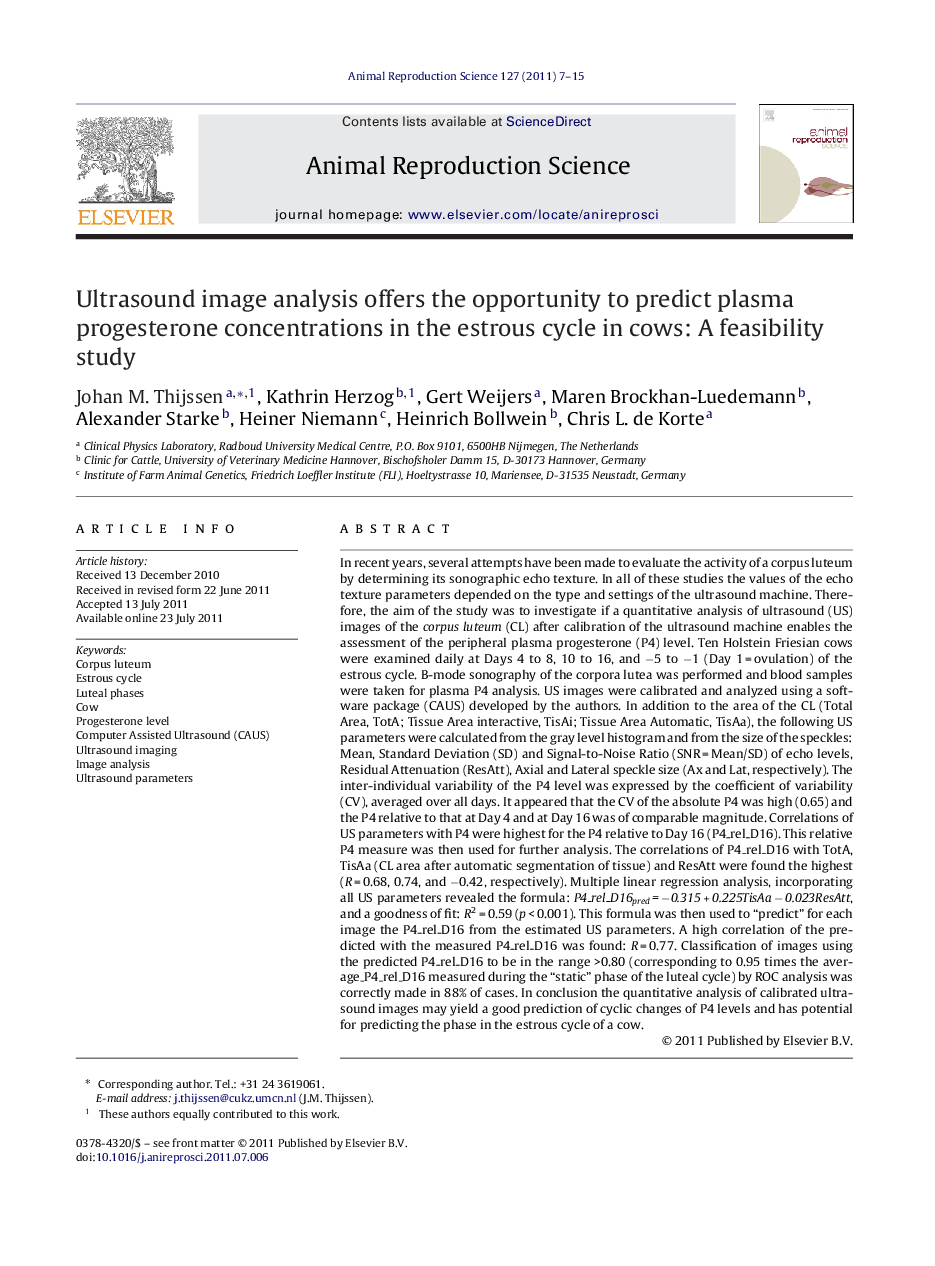| کد مقاله | کد نشریه | سال انتشار | مقاله انگلیسی | نسخه تمام متن |
|---|---|---|---|---|
| 2073551 | 1544770 | 2011 | 9 صفحه PDF | دانلود رایگان |

In recent years, several attempts have been made to evaluate the activity of a corpus luteum by determining its sonographic echo texture. In all of these studies the values of the echo texture parameters depended on the type and settings of the ultrasound machine. Therefore, the aim of the study was to investigate if a quantitative analysis of ultrasound (US) images of the corpus luteum (CL) after calibration of the ultrasound machine enables the assessment of the peripheral plasma progesterone (P4) level. Ten Holstein Friesian cows were examined daily at Days 4 to 8, 10 to 16, and −5 to −1 (Day 1 = ovulation) of the estrous cycle. B-mode sonography of the corpora lutea was performed and blood samples were taken for plasma P4 analysis. US images were calibrated and analyzed using a software package (CAUS) developed by the authors. In addition to the area of the CL (Total Area, TotA; Tissue Area interactive, TisAi; Tissue Area Automatic, TisAa), the following US parameters were calculated from the gray level histogram and from the size of the speckles: Mean, Standard Deviation (SD) and Signal-to-Noise Ratio (SNR = Mean/SD) of echo levels, Residual Attenuation (ResAtt), Axial and Lateral speckle size (Ax and Lat, respectively). The inter-individual variability of the P4 level was expressed by the coefficient of variability (CV), averaged over all days. It appeared that the CV of the absolute P4 was high (0.65) and the P4 relative to that at Day 4 and at Day 16 was of comparable magnitude. Correlations of US parameters with P4 were highest for the P4 relative to Day 16 (P4_rel_D16). This relative P4 measure was then used for further analysis. The correlations of P4_rel_D16 with TotA, TisAa (CL area after automatic segmentation of tissue) and ResAtt were found the highest (R = 0.68, 0.74, and −0.42, respectively). Multiple linear regression analysis, incorporating all US parameters revealed the formula: P4_rel_D16pred = −0.315 + 0.225TisAa − 0.023ResAtt, and a goodness of fit: R2 = 0.59 (p < 0.001). This formula was then used to “predict” for each image the P4_rel_D16 from the estimated US parameters. A high correlation of the predicted with the measured P4_rel_D16 was found: R = 0.77. Classification of images using the predicted P4_rel_D16 to be in the range >0.80 (corresponding to 0.95 times the average_P4_rel_D16 measured during the “static” phase of the luteal cycle) by ROC analysis was correctly made in 88% of cases. In conclusion the quantitative analysis of calibrated ultrasound images may yield a good prediction of cyclic changes of P4 levels and has potential for predicting the phase in the estrous cycle of a cow.
Journal: Animal Reproduction Science - Volume 127, Issues 1–2, August 2011, Pages 7–15